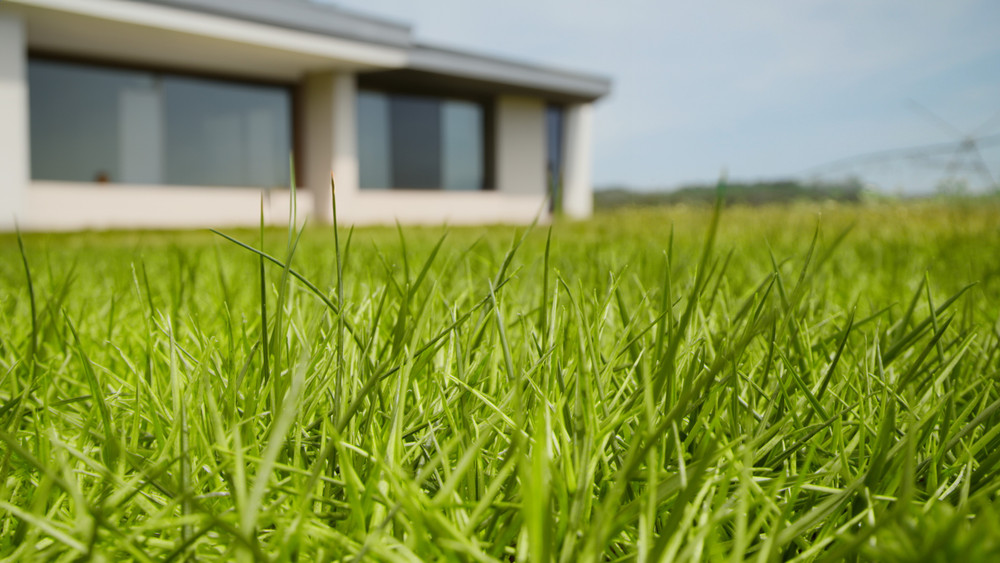Houston Sod Guide: Best Grass Types, Climate Tips & Maintenance
Posted by Farm2Yard on Sep 2nd 2025
Houston Sod Guide: Best Grass Types, Climate Tips & Maintenance
1. What Climate Is Houston In—and What Does That Mean?
Houston lies in a humid subtropical climate (Köppen: Cfa): long, hot, humid summers with frequent rainfall and warm, mild winters. It’s part of eastern Texas within the warm-season grass zone. These conditions favor grasses that thrive in heat and humidity, tolerate occasional drought spells, and handle robust rainfall. Cooler-season grasses struggle in Houston’s heat and humidity—warm-season turfgrasses dominate (Texas Grass, Better Homes & Gardens, Gardener Bible).
The extreme summer heat and humidity also elevate the risk of lawn diseases (e.g., gray leaf spot, brown patch) and insect pests (e.g., chinch bugs), meaning plant choices must factor in resistance traits.
2. Which Types of Sod Perform Best in Houston?
Several warm-season sod grasses are well-adapted to Houston, supported by academic turfgrass research and extension advice:
-
St. Augustinegrass: The most shade-tolerant warm-season turfgrass and a common choice across coastal areas near Houston. Cultivars such as Raleigh, Palmetto, and Floratam are widely used—each with strengths in shade tolerance, insect resistance, or disease resilience (Houston Grass South, Texas Grass PDF).
-
Bermudagrass: Exceptionally drought- and traffic-tolerant, widely planted throughout Texas, though it demands full sun and higher maintenance (Texas Grass PDF).
-
Zoysiagrass (e.g., Emerald, Palisade): A lush, fine-textured luxury turf that tolerates shade and drought fairly well and resists weeds and disease. However, it’s slow to establish and may require dethatching (Lawn Guru).
-
Centipedegrass: Low-maintenance, coarse-textured, adapted to East Texas, but best for low-traffic lawns and not as drought-tolerant (Texas Grass PDF).
-
Buffalograss: Extremely drought-tolerant and low-maintenance; best suited to low-input settings but less common in humid Houston and vulnerable to weeds if watered too heavily (Better Homes & Gardens).
-
Winter Overseeding with Perennial Ryegrass: Common practice to maintain green color during winter dormancy of warm-season grasses (LawnStarter).
3. How Does Local Weather and Local Nuances Impact Sod Selection?
-
Summer heat & humidity: Heat stress can brown turf; diseases like gray leaf spot and brown patch thrive in warm, moist conditions—St. Augustine varieties adapted for disease resistance (e.g., Floratam against SAD virus) can help (Houston Grass South).
-
Shade: Many Houston lawns have partial shade from trees—St. Augustine (especially Palmetto and Raleigh) and Zoysia (Emerald) offer better shade tolerance.
-
Soils & flooding: Houston’s loamy to clay soils and occasional heavy rains favor turf types with good drainage tolerance—St. Augustine and Zoysia do reasonably well.
-
Insect pressure: Chinch bugs and sod webworms are common pests in St. Augustine—monitor and treat proactively to avoid damage (Aggieland Green).
-
Water restrictions/drought: Bermudagrass and Zoysia demand less irrigation; Buffalograss is the most drought-resilient, though less common in this humid region (Better Homes & Gardens).
-
Urban heat islands: Dense turf helps cool surroundings and resist compaction, making varieties like Zoysia and Bermudagrass useful in high-use urban yards.
4. Maintenance Requirements by Season
| Season | Tasks & Notes |
| Spring | Mow warm-season grasses once green-up begins; fertilize once growth starts; dethatch Zoysia; watch for early disease or insect signs. |
| Summer | Irrigate deeply (~1 inch/week); monitor for gray leaf spot, brown patch, and chinch bugs; avoid over-fertilizing. |
| Fall | Reduce mowing height; apply fertilizer with less nitrogen; clean thatch; overseed with perennial ryegrass if winter green is desired. |
| Winter | Warm-season grasses go dormant; minimal mowing/watering; if overseeded, maintain ryegrass until spring transition. |
5. Best Time of Year to Lay New Sod
The ideal windows to install warm-season sod in Houston are late spring through early summer, once soil temperatures warm (late April–June). This gives roots time to establish before peak summer heat (House Beautiful).
Late fall can also be a good time to plant as the temperature has stabilized and there is a big window before a frost in the winter.
For winter overseeding with ryegrass, plan for after warm-season dormancy begins but before the first frost.
6. Other Tips & Recommendations
-
Site prep is key: Grade, remove debris, loosen soil, add compost or lime as needed (Texas A&M AgriLife Extension).
-
Select improved cultivars: Disease- and drought-resistant options like Floratam, Emerald Zoysia, or Tif-series Bermudagrass provide long-term reliability.
-
Mowing height: Bermudagrass (1–1.5"), St. Augustine (2.5–4"), Zoysia (~0.75–1" with reel mower).
-
Water smart: Morning irrigation reduces disease risk; deep infrequent watering encourages strong root systems.
-
Thatch management: Especially important for Zoysia; dethatch annually or scalp lightly in spring.

